Recommending books is the highlight of this relaxing shop management sim, though gameplay can feel monotonous for some.

Tiny Bookshop was a highly anticipated indie game before its release in August. It sold 200.000 copies within its first week and now, nearly one month later, has surpassed 300.000 copies sold (including PC and Nintendo Switch sales). At this moment, the game has an Overwhelmingly positive review score on Steam with close to 2.000 reviews.
The premise of this simulation/store management game is a common one from other ones in the cozy space, but unlike some other titles, here it fits the narrative really well: you just abandoned your old life and moved to Bookstonbury, a small town by the sea, where you open a mobile bookstore. Little by little, you discover new spots in town where you can open your tiny bookshop, get to know (and help) the friendly locals and participate in small town events.
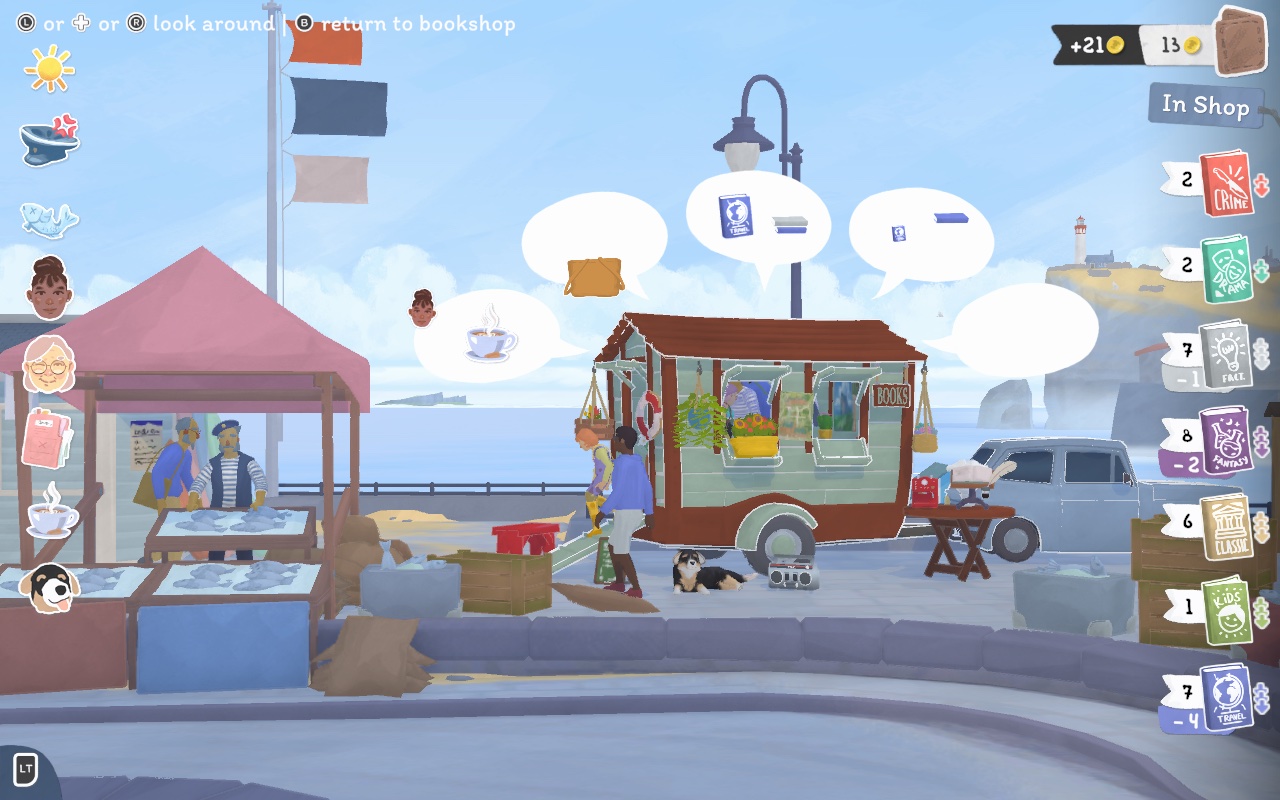
Tiny Bookshop is a slow-paced and simple management game, with a very standout art style and unique soundtrack. Reviews most commonly praise the laid-back gameplay and it seems that players are of the consensus that the game is truly relaxing and cozy.
As someone that loves reading, I was eager for a game like Tiny Bookshop, so I bought it just days after release. Even though I did enjoy many of the aspects of the game, I wasn’t as drawn in as I thought I would be. Here’s my review and thoughts after playing it for about 7 hours.
Gameplay
Each in-game day starts out in a similar fashion. In the morning before you open your shop, you can do the following:
- Read the newspaper which features your performance from the previous day, the weather forecast, books or decorations for sale, and whether there are any events that day (for example, there’s a flea market that happens every Saturday)
- Decorate your bookshop with items from your storage or that you just purchased from the newspaper ads
- Fill your bookshelf with books, choosing both the quantity and genres. Each book in the game is categorized as either drama, classic, crime, fantasy, non-fiction (fact), travel or kids
- Decide where to set up shop. At first you can’t pick from many locations, but you unlock new areas as you progress in the game, and each one attracts customers with different book preferences.
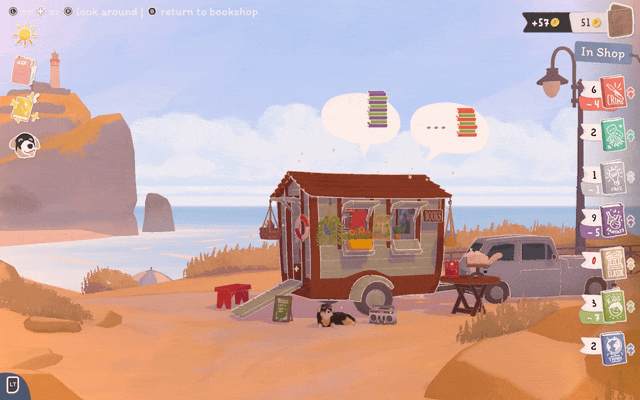
Next, you head to your chosen location and open the windows and door of your little truck to start the day. I absolutely love this small ritual — there’s just something inexplicably satisfying about this sequence at the start and end of each day.
Once you’re open for business, customers start coming into your shop and browsing the books. Some recurring characters will also stop to chat with you. These regulars might offer you some advice, ask for your help with something (which might result in a sort of quest), or just make conversation.
The real highlight of the game for me, though, is when customers ask you for book recommendations. These can range from very specific requests to broad preferences. Every title in the game is an actual book (with the exception of a few ones created for the game lore), and the whole thing is easily my favorite aspect of Tiny Bookshop.
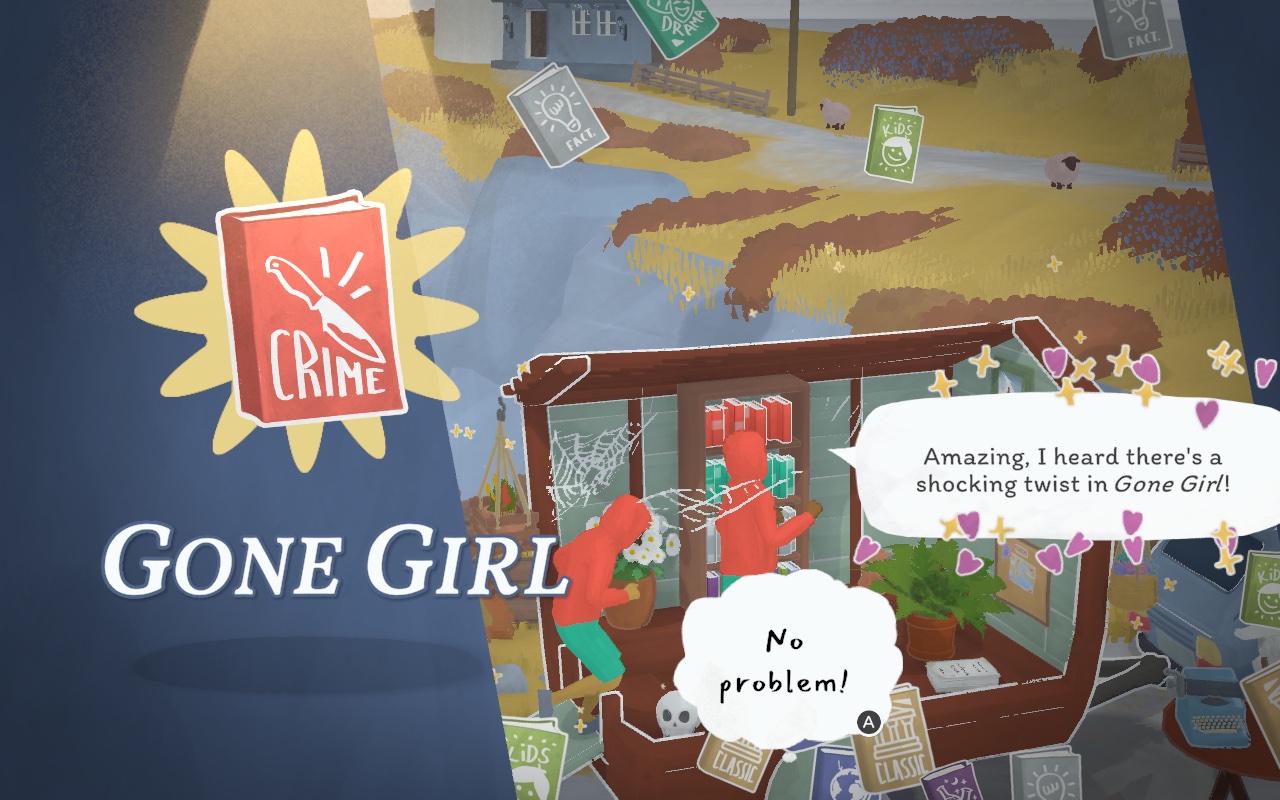
If you’re not a reader and worry you might not enjoy the recommendation mechanic, I should mention that for each book there’s a short but helpful description of the plot, so you can still make informed recommendations. And honestly, even as a frequent reader, I still found myself discovering many books I’d never heard of, which just added to my experience.
Graphics and music
When it comes to the graphics, they feel like a blend of 2D and 3D elements. While you view the action from a pulled-back perspective that allows you to navigate horizontally rather than walk around the space, the customers that come in and out of your shop are three-dimensional. The environments use layered backgrounds with parallax effects to create depth.
The art style has a pretty and hand-drawn quality with what feels to me like gouache, colors are vivid yet a bit muted. Character portraits are 2D and also follow this style, though you’ll only see them for the regular local characters and not for all customers.
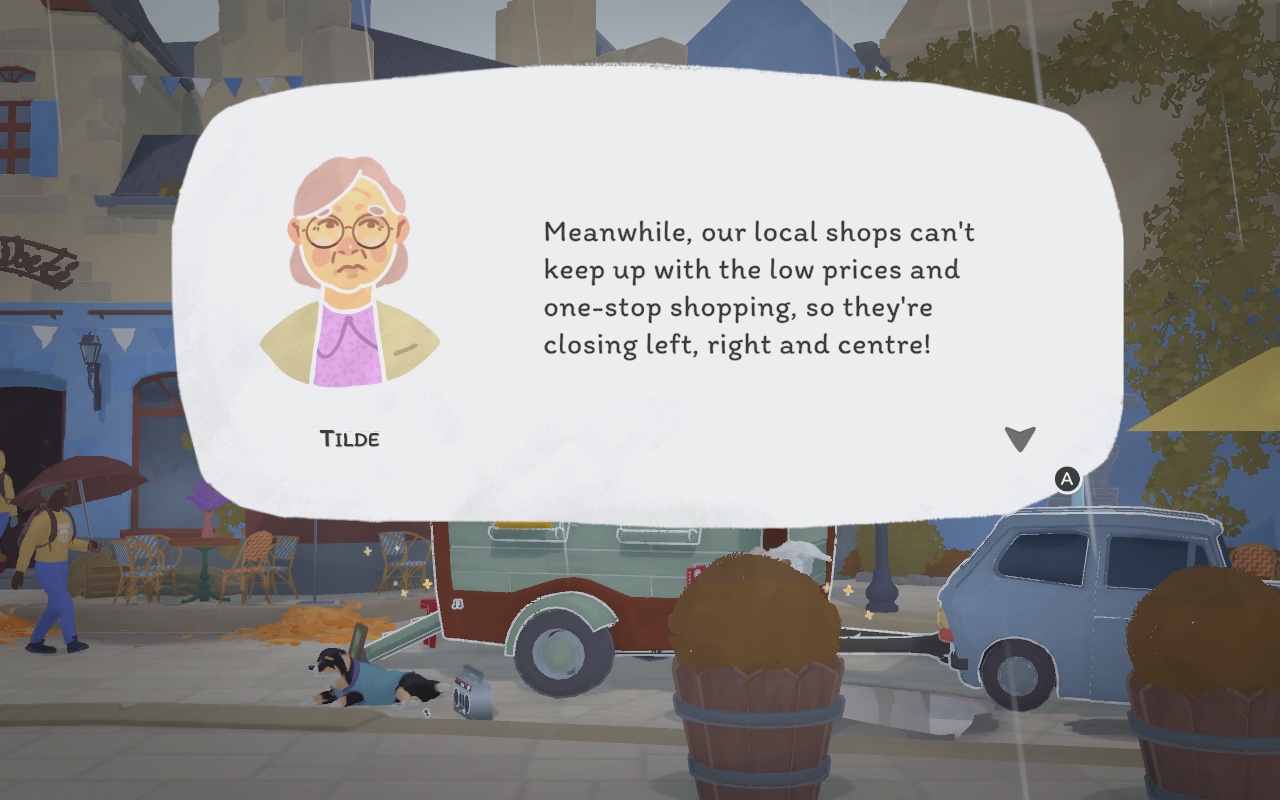
Notably, you have no visual representation in the game; there’s no character creation, portrait, or even a name for your protagonist.
I was pleasantly surprised with the music and sound effects in Tiny Bookshop. The game avoided predictable sounds associated with bookstores by featuring acoustic-leaning lo-fi music full of personality. The soundtrack is credited to Raven Rusch. Sound effects are particularly satisfying and really add to the immersion, from the jingle of coins when you sell a book to the noise of the coffee machine that you can purchase for your shop.
My personal experience
As I mentioned in the beginning of this review, I wasn’t as drawn in to Tiny Bookshop as much I expected to be. My main issues with it came down to gameplay and a lack of immersion.
The gameplay felt repetitive fairly quickly. As someone who enjoys management games, I was hoping to have more actions to take during the day and variation linked to progression. Even with the book recommendations mechanic, the idle part of the day quickly became tedious to me, not to mention the flaws within this mechanic: sometimes I was sure my recommendation would fit the requirements, but then it wasn’t a good match. However, making a bad book recommendation doesn’t have negative implications, so that was a minor point for me.
Some unclear mechanics frustrated me a little. Decorative items provide buffs (for example, increasing sales of a particular genre), but their effects weren’t always properly explained – I am still wondering how “danger” actually impacts my sales. It’s also confusing how some items amplify all effects for a certain type of item by a percentage, but I don’t see that being translated into the overview of all active effects. (for example, if a plant increases crime book sales by 2% and it this effect is amplified by 20%, shouldn’t that become 2.4%?)
Another source of mild frustration was the randomness of the daily selection of books for sale in the newspaper. At some point, I really needed to stock up my shop with non-fiction (fact) books, but I just couldn’t purchase any for days.
Sadly, I found most of the townspeople uninteresting, except for Anne who became my favourite local. I think this detachment comes from my character not having any visual representation in the game — since I couldn’t walk around Bookstonbury or see myself inside the shop interacting with customers and seeing their reactions, that made me feel like an outsider rather than part of that quirky, close-knit community. This disconnect made me disappointed since the game’s premise is about making this town your new home, yet the game design keeps you feeling like an outsider.
Conclusion
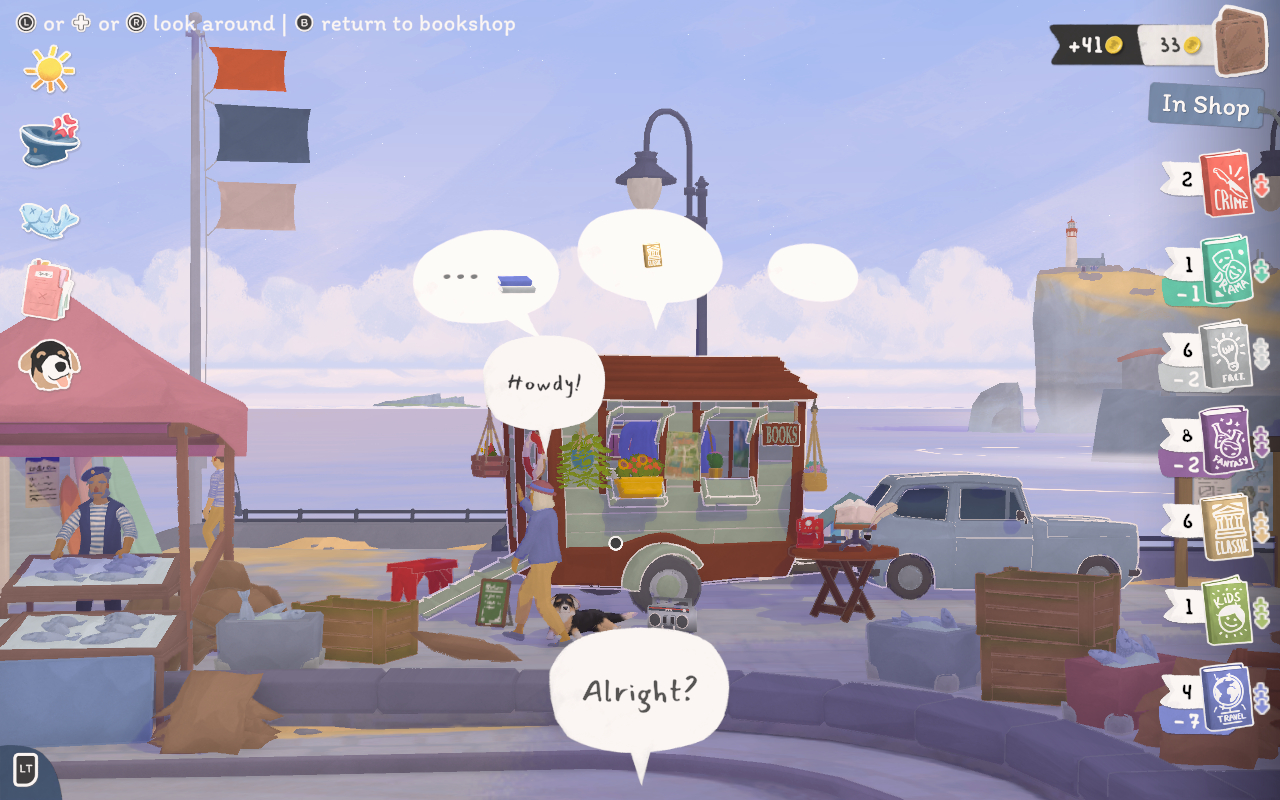
Sometimes it feels like everyone’s in love with a book that just doesn’t do it for you – and that was exactly how I felt about Tiny Bookshop, as I’ve seen players absolutely love the game, just like I feel about Sally Rooney’s titles (I’m sorry). Even my partner, who loves complex management games like Factorio and Mindustry, has only good things to say about it. The €19,99 price point definitely played a factor for me, as I was hoping for more varied gameplay and mechanics, even within a cozy experience.
All that being said, there’s no doubt that Tiny Bookshop is a product of love for both books and games, thoughtfully put together from the art to the soundtrack. If you like cozy gaming experiences and don’t mind repetitive gameplay (or maybe it’s exactly what you’re seeking), you’re very likely to have a good time playing this one.
Practical information
Tiny Bookshop is available for PC and Nintendo Switch.
I played the game on my Steam Deck and it worked flawlessly, but sometimes I had to interact with some elements through the touch screen to be able to access hints.
Thank you for reading!
-Luna

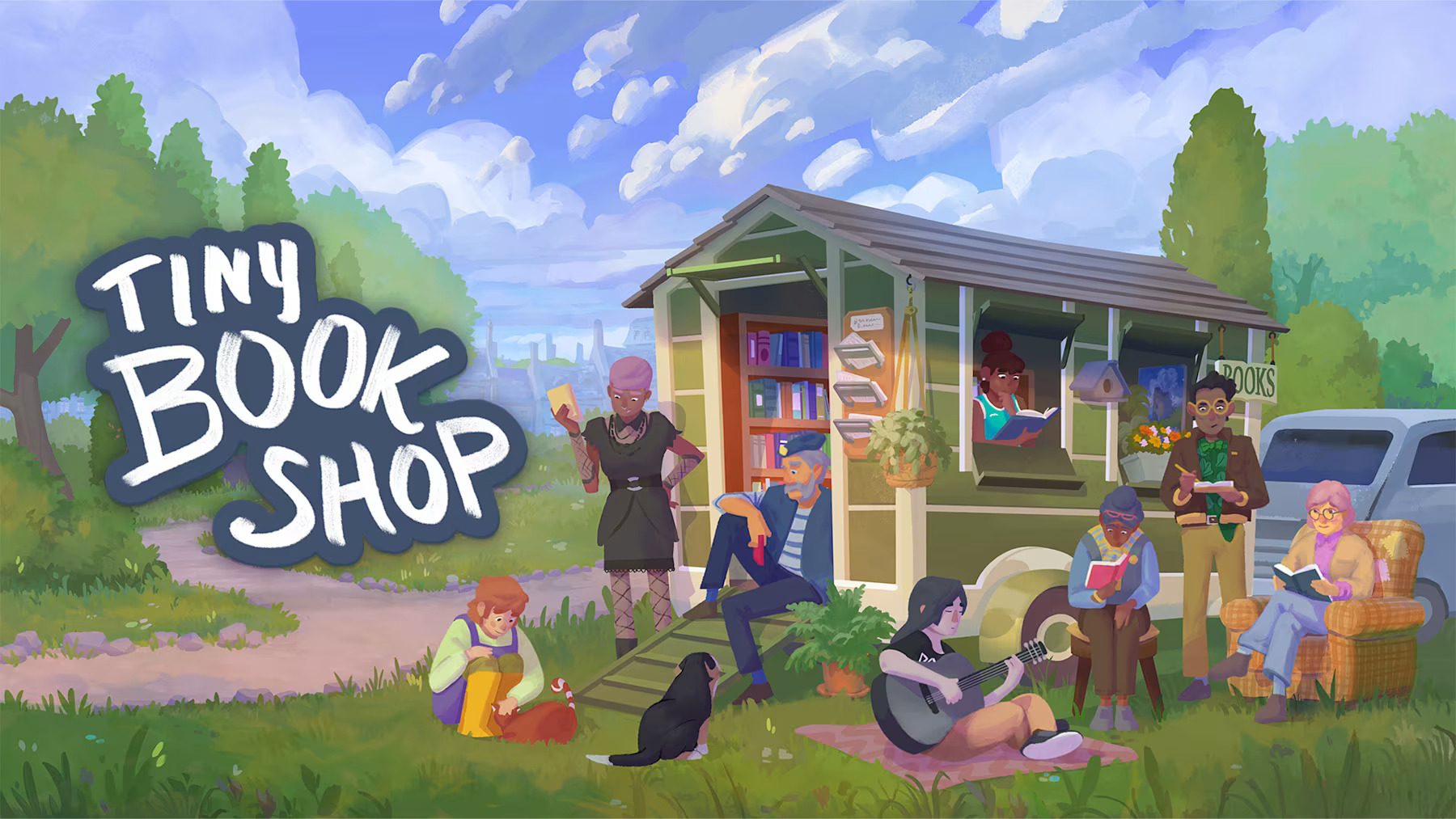
Write a comment